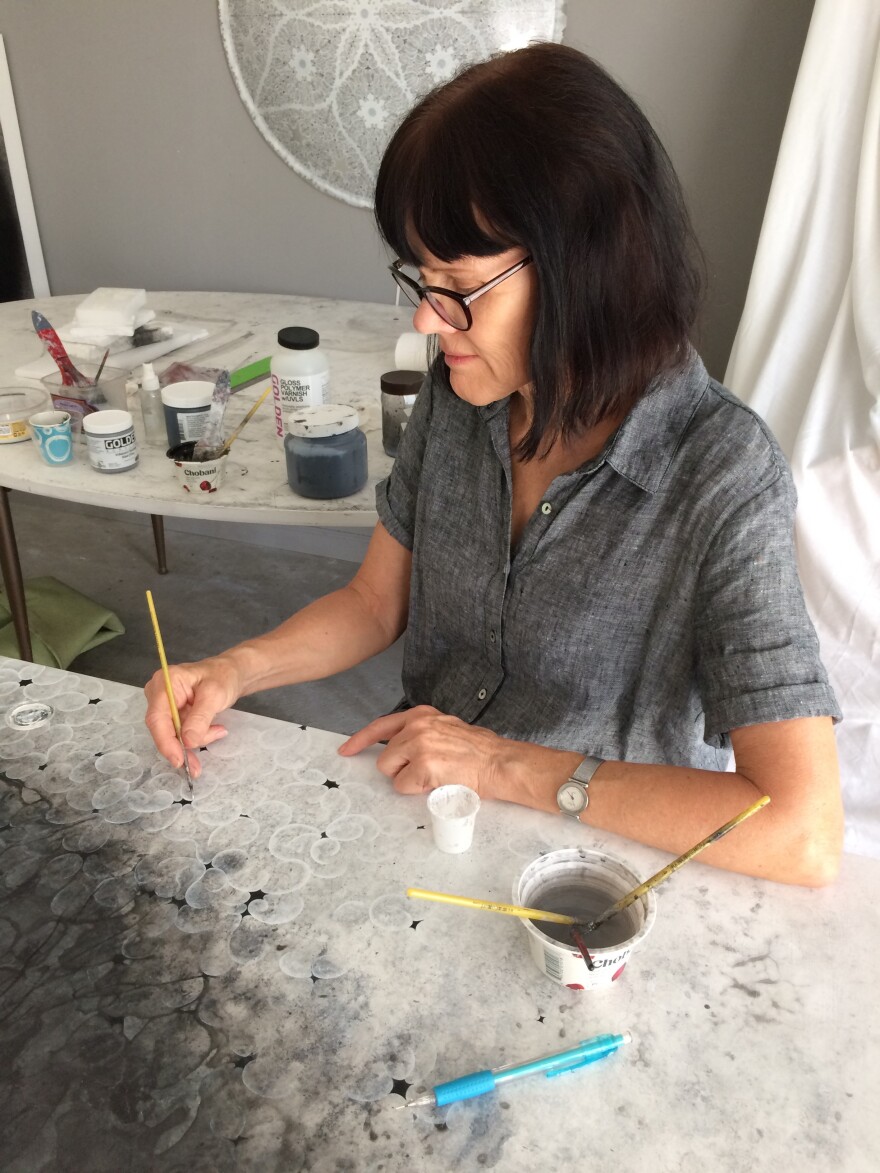When a total solar eclipse was due to pass over a large swath of the United States in 2017, Carol Prusa hadn’t initially planned to see it firsthand.
Prusa, who teaches painting and drawing at Florida Atlantic University and lives in Boca Raton, had been reading about the astronomer Maria Mitchell, the first female American astronomer and a pivotal figure in women’s science and astronomy education who had taken a group of women from Vassar College to Denver in 1878 to witness a total solar eclipse.
When a meeting scheduled during the 2017 eclipse was canceled, Prusa called a friend and they made last-minute plans to get to Nebraska — one of the few places in the path of totality where every plane, car and hotel wasn’t already booked.
Seeing that eclipse in person, and reading about Mitchell and other pioneering women in astronomy and science, inspired Prusa’s new exhibit at the Boca Raton Museum of Art.
“All the work really focuses on when day goes to night, in that liminal space — and the mystery of space,” she said.

Much of Prusa’s work on display at the museum features silverpoint drawing, an ancient artistic practice, combined with the more modern materials of fiberglass, sculpted resin and LED lights. Other pieces are copper plate etchings created at a studio in Palm Beach Gardens.
Prusa has had a lifelong interest in science, and majored in chemistry in college. She connects scientists’ striving to make sense of the world with artists’ efforts to interpret it.
“I do have a deep appreciation for their wanting to distill into an equation or into a theory everything they know about their world,” she said of scientists. “I think that’s what an artist does as well.”
Even the way Prusa talks about her inspiration is inflected with scientific terms. She describes her work with color in portraying the solar eclipse and other scientific concepts as inspired by “scotopic vision,” or the way the eye interprets information under low-light levels.
“I like to ride my bike at night with no lights because you’re peering into the darkness, trying to see where you’re going,” she said, “and your mind is so absorbed in trying to grab information that the whole thing goes like this shimmery, speckly thing.”
When Prusa goes into her backyard studio to work, she rings a bell, “to signify leaving everything else behind,” she said. Then she’ll work for hours on her intricately detailed scenes in shades of grey and black.
The meditative quality of how Prusa composes her artwork comes through to the viewer, as well, said museum director Irvin Lippman.
“It’s sort of like the eclipse,” he said. “All your attention is on that event for those few minutes, and everything else sort of drips away. And that’s what I’ve found about her work.”

The works in Prusa’s exhibit, which runs through Jan. 19, honor other women scientists alongside Mitchell. One piece depicts the work of Vera Rubin, whose research provided evidence for the existence of dark matter. Another is inspired by Henrietta Swan Leavitt, who discovered the relationship between period and luminosity in certain kinds of stars.
Prusa’s pieces aren’t portraits of the women, or straightforward depictions of their work.
“I’m trying to channel them and their work, but abstractly,” she said. “So it doesn’t illustrate their ideas, but it connects visually with me to their ideas.”
Lippman, the museum director, notes that Prusa’s work fits into a newer push to incorporate the arts into the idea of STEM (science, technology, engineering and math) education.
“We talk a lot about STEAM [science, technology, engineering, arts and math] in our education,” he said. “She is the personification of that, she brings together art and technology in a really brilliant way.”
Prusa’s exhibit opens Tuesday, Aug. 20 and runs through Sunday, Jan. 19. Admission to the museum is free for all visitors through the end of August, and is always free for children and students.


